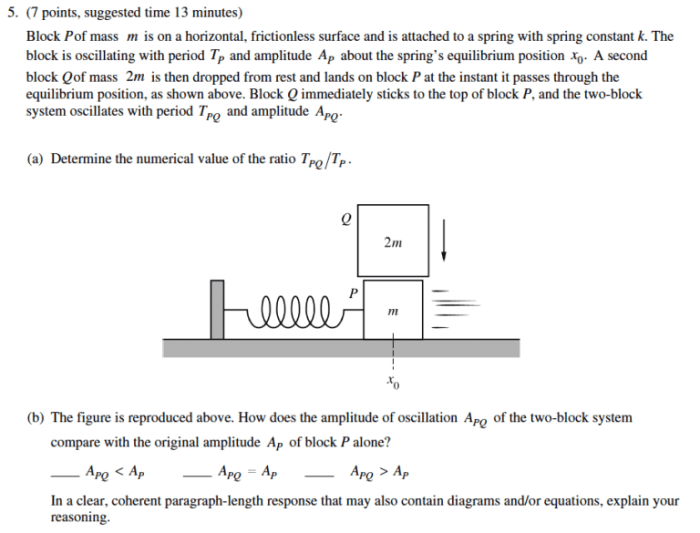Embark on a journey of physics mastery with our Physics 1 Exam 1 Review. Dive into the depths of core concepts, problem-solving strategies, and essential formulas to unlock your full potential.
Prepare to tackle the exam head-on with a comprehensive breakdown of the format, question types, and grading scheme. We’ll guide you through the key concepts, ensuring a solid understanding of the fundamentals.
Exam Overview

Exam 1 is designed to assess your understanding of the fundamental concepts and principles covered in the first half of the Physics 1 course.
The exam will consist of a variety of question types, including multiple choice, true/false, short answer, and problem-solving questions. The exam will be timed, and you will have a limited amount of time to complete it.
As you prepare for your Physics 1 Exam 1, it’s important to review the concepts thoroughly. If you’re looking for additional resources, check out the comprehensive guide on mfr body code ford f150 . Understanding these concepts will help you ace the exam and solidify your foundation in physics.
Exam Format
- Multiple choice:20 questions, each worth 1 point.
- True/false:10 questions, each worth 1 point.
- Short answer:5 questions, each worth 2 points.
- Problem-solving:3 questions, each worth 5 points.
Grading Scheme
Your exam score will be calculated as follows:
- Multiple choice: 20 points
- True/false: 10 points
- Short answer: 10 points
- Problem-solving: 15 points
The total possible score for the exam is 65 points.
Time Allocation
You will have 90 minutes to complete the exam.
Key Concepts
Exam 1 covers the foundational concepts of physics that lay the groundwork for understanding the subject. These concepts form the building blocks for exploring more advanced topics in subsequent exams.
The key concepts encompass:
- Motion and kinematics
- Forces and dynamics
- Energy and work
- Momentum
Problem-Solving Strategies: Physics 1 Exam 1 Review
Mastering problem-solving is crucial for physics exams. By adopting effective strategies and techniques, you can tackle exam questions confidently and efficiently.
The key to successful problem-solving lies in a systematic approach that involves understanding the problem, devising a plan, executing the solution, and reviewing the results.
Identifying Key Information
- Read the problem carefully and identify the givens and the unknown.
- Draw a diagram or visualize the scenario to gain a clear understanding.
- Identify the relevant physical principles and equations applicable to the problem.
Planning the Solution
- Determine the steps involved in solving the problem.
- Consider different approaches and select the most efficient one.
- Organize your thoughts and plan the calculations logically.
Executing the Solution
- Apply the relevant equations and principles to solve the problem.
- Show all your work and calculations clearly.
- Be mindful of units and conversions throughout the solution.
Reviewing the Results
- Check your answer for reasonableness and consistency.
- Consider alternative approaches or estimates to verify your solution.
- Learn from your mistakes and identify areas for improvement.
Formula Review
Mastering the essential formulas and equations is crucial for success in Exam 1. These formulas provide the mathematical tools to solve problems related to motion, forces, and energy. To facilitate your preparation, we’ve compiled a comprehensive table of the most important formulas you need to know.
Each formula is accompanied by a brief explanation of its purpose and applications. Additionally, we’ll discuss the limitations and assumptions associated with each formula, ensuring you understand their proper usage.
Essential Formulas for Exam 1
The following table summarizes the essential formulas you need to master for Exam 1:
| Formula | Purpose |
|---|---|
| $$\textDisplacement = \frac12\textAcceleration\times\textTime^2$$ | Calculates the displacement of an object moving with constant acceleration. |
| $$\textVelocity = \textAcceleration\times\textTime$$ | Determines the velocity of an object moving with constant acceleration. |
| $$\textAcceleration = \frac\textChange in Velocity\textTime$$ | Calculates the acceleration of an object experiencing a change in velocity over time. |
| $$\textForce = \textMass\times\textAcceleration$$ | Relates the force applied to an object to its mass and acceleration. |
| $$\textWork = \textForce\times\textDisplacement$$ | Calculates the work done on an object when a force is applied over a displacement. |
| $$\textKinetic Energy = \frac12\textMass\times\textVelocity^2$$ | Determines the kinetic energy of an object in motion. |
| $$\textGravitational Potential Energy = \textMass\times\textGravitational Acceleration\times\textHeight$$ | Calculates the gravitational potential energy of an object at a certain height. |
Units and Measurement
Units are fundamental to physics as they allow us to quantify and compare physical quantities. The International System of Units (SI) is the most widely used system of measurement in the world, and it provides a standardized set of units for all physical quantities.
It’s crucial to use the correct units in calculations to ensure accurate results. Incorrect units can lead to erroneous conclusions and hinder effective problem-solving.
Conversions Between Units
Conversions between different units within the SI system are essential for ensuring consistency and comparability. To convert from one unit to another, multiply the original value by the appropriate conversion factor. Conversion factors are ratios that relate different units of the same quantity.
- For example, to convert 100 centimeters (cm) to meters (m), we use the conversion factor 1 m = 100 cm. Multiplying 100 cm by 1 m/100 cm gives us 1 m.
Experimental Design
Experimental design is a crucial aspect of physics that allows us to investigate natural phenomena and test scientific hypotheses. It involves carefully planning and conducting experiments to collect reliable data that can be analyzed to draw meaningful conclusions.
Designing Simple Physics Experiments
When designing a physics experiment, it’s essential to consider the following steps:
- Define the Hypothesis:Formulate a clear and testable hypothesis based on your observations or existing theories.
- Identify Variables:Determine the independent (controlled) and dependent (measured) variables in your experiment.
- Control Variables:Identify and control all other variables that could potentially influence your results.
- Design the Procedure:Develop a step-by-step procedure that clearly Artikels the experimental setup, measurements, and data collection.
- Conduct the Experiment:Carefully follow the procedure and record all relevant data accurately.
- Analyze the Results:Use appropriate statistical methods to analyze the data, identify trends, and draw conclusions.
Data Analysis and Interpretation
Once the experiment is conducted, the collected data needs to be analyzed and interpreted to draw meaningful conclusions:
- Graphical Analysis:Create graphs and plots to visualize the data and identify patterns and relationships.
- Statistical Analysis:Use statistical tests to determine the significance of your results and identify any potential sources of error.
- Interpretation:Based on the data analysis, draw conclusions that support or refute your hypothesis.
- Error Analysis:Evaluate the potential sources of error in your experiment and discuss how they could affect your results.
Practice Questions
Practice questions are an essential part of exam preparation. They allow you to test your understanding of the key concepts and identify areas where you need further review.
This section provides a set of practice questions that cover the key concepts of Exam 1. The questions are of varying difficulty levels to challenge students of all abilities.
Mechanics, Physics 1 exam 1 review
- A 10 kg object is moving at a velocity of 5 m/s. What is its kinetic energy?
- A force of 100 N is applied to a 20 kg object. What is the object’s acceleration?
- A 5 kg object is dropped from a height of 10 m. What is its velocity just before it hits the ground?
Thermodynamics
- A gas occupies a volume of 10 L at a pressure of 1 atm. What is its volume if the pressure is increased to 2 atm?
- A heat engine operates at an efficiency of 25%. What is the ratio of the work output to the heat input?
- A refrigerator has a coefficient of performance of 3. What is the ratio of the heat removed from the cold reservoir to the work input?
Waves
- A wave has a frequency of 10 Hz and a wavelength of 2 m. What is its speed?
- A light wave is incident on a glass surface at an angle of 30 degrees. What is the angle of refraction?
- A sound wave has a wavelength of 1 m. What is its frequency if the speed of sound is 343 m/s?
Electricity and Magnetism
- A circuit has a resistance of 10 ohms and a voltage of 12 volts. What is the current in the circuit?
- A magnet has a magnetic field strength of 1 tesla. What is the force on a charge of 1 coulomb moving through the field at a velocity of 1 m/s?
- An inductor has an inductance of 1 henry. What is the energy stored in the inductor when a current of 1 ampere flows through it?
Questions and Answers
What’s the purpose of Exam 1?
Exam 1 assesses your understanding of the fundamental concepts covered in the first part of the physics 1 course.
How do I prepare for the exam?
Attend lectures, review your notes, practice problem-solving, and utilize the resources provided in this review.
What’s the best way to approach problem-solving?
Start by identifying the givens and the unknown, then apply the relevant formulas and concepts to find the solution.
